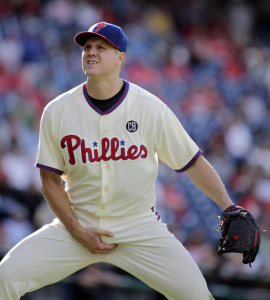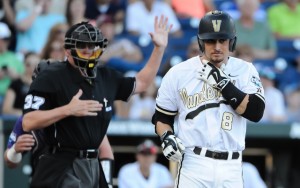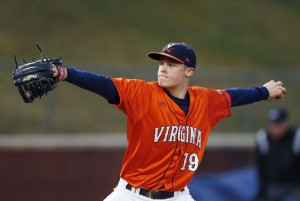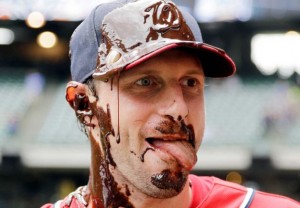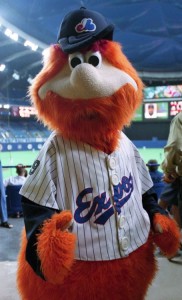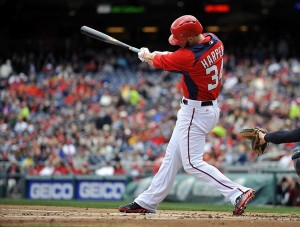So, by now we’ve all heard the news. The Nats acquired disgruntled Phillies closer Jonathan Papelbon for 2013 4th rounder Nick Pivetta, newly promoted to AA.
On the plus side, the Phillies pick up all of his remaining 2015 salary (roughly $4.5M), and Papelbon pre-negotiated his 2016 option at a slightly lower figure ($11M with $3M deferred). This is no 2-month rental; this is a strategic decision to go with him for the next two years. So in that respect, what the Nats get versus what they gave up is pretty durn good. Pivetta is a decent prospect who had a great first half for Potomac and just earned a promotion to AA (where he’s gotten hit around a bit in his first couple of starts). But in terms of what the team is giving up, Pivetta is a “minor prospect” (mostly on the outside of our top 10 lists) and is perhaps no better than 13th or so on our starter depth chart (just off the top of my head, Scherzer, Strasburg, Zimmermann, Fister, Gonzalez, Ross, Roark, Cole, Jordan, Hill, Treinen, Espino, Voth and Giolito ahead of him), so the Nats trade from a surplus/depth for a position of need.
As a side-effect of the acquisition, AAA catcher Dan Butler was DFA’d to make room on the 40-man roster. Butler has been struggling in AAA and may pass through waivers, but if he doesn’t suddenly the Nats have zero catcher depth on the active roster. So that’s a risk i’m surprised they took (if it were me, I could have named several other guys I would have risked versus Butler first).
My concern with this deal is more on the non-quantifiable side. What message does this send to your team? Drew Storen has been *excellent* this year, has remade his mechanics and (as noted elsewhere) has the 2nd best ERA of any reliever in the game over the last two years. He’s been just as good a closer as Papelbon this year, and for his troubles gets demoted out of the closer spot. Storen’s future compensation is *directly* tied to the number of saves (however arbitrary and useless that statistic may be) he earns, and now the team has told him “hey, we know you’ve been awesome but too bad you’re no longer going to have the opportunity to earn saves and therefore we’ll argue against you in arbitration to that end.” Its no wonder Storen was immediately quoted as wanting to “explore his options” with his representation.
Lets also just say that it would not surprise this observer in the least if Storen’s performance fell off a cliff in the coming months.
You can argue that winning creates clubhouse chemistry; that’s your perogative. You can talk about how the old Yankees “25 men, 25 cabs” had no problem winning and you can disclaim the chemistry factors that seemed to be in play with recent teams like the 2013 Red Sox or last year’s Royals. Fair enough. You can make the argument that these guys are all highly paid and should just accept whatever role is given to them … but lets be honest here; MLB players are human, they have egos, and (especially in the case of a reliever) they want to be the closer. More to the point, when they do everything management asks of them and still get replaced, its hard not to blame them for being disgruntled. This isn’t like when the Nats demoted John Lannan: Storen didn’t get beat out in spring training; he’s been absolutely stellar for the past two years.
Is this yet another reaction to Storen’s post-season record? Lets all say it together: “short sample sizes.” Storen has a grand total of 5 1/3 post-season innings. Papelbon’s numbers in the post season are great (a 1.00 ERA in 27 innings), but he hasn’t pitched in October in 6 years. Clayton Kershaw has a 5+ ERA in the post-season and nobody’s talking about replacing him. You look for excellence in the regular season and hope it plays out in the post-season.
Two years ago, the management over-reacted to Storen’s post-season performance by over-paying (and burning a first round pick) on a closer in Rafael Soriano who, it should be noted, was himself demoted from the closer role in favor of the man he replaced by the time the deal was done. Lets just hope that we’re not standing here in September of 2016 with Papelbon and his waning velocity ballooning to a 4+ ERA in his walks year with the ever-steady Storen right back in the same role…
I would have much preferred the team find some middle-to-later innings relievers to strengthen things in the 7th and 8th innings and not upset what Storen has established. But it isn’t my team. I just hope Storen can take the high road (much like Tanner Roark has been forced to do) and goes back to being a team player.
A few other excellent takes on the trade I recommend:
- Mark Zuckerman talks about how this trade is more about Storen than Papelbon.
- Jeff Sullivan sarcastically talks about how the Nats have “rewarded” Storen’s breakout performance.
- Ken Rosenthal noted that, despite the Nats being 46-0 this year when leading after 8 innings, decided they needed to change the closer.
- Keith Law, who hates any trade for a reliever, reviews what the Phillies are getting in Pivetta.
Post-publishing update: Joe Posnanski wrote a column 2 weeks onward, crucifying Rizzo and this trade (calling it “The Worst trade of the Season”) for its intangible impact on the team, echoing many of the same sentiments expressed here.
